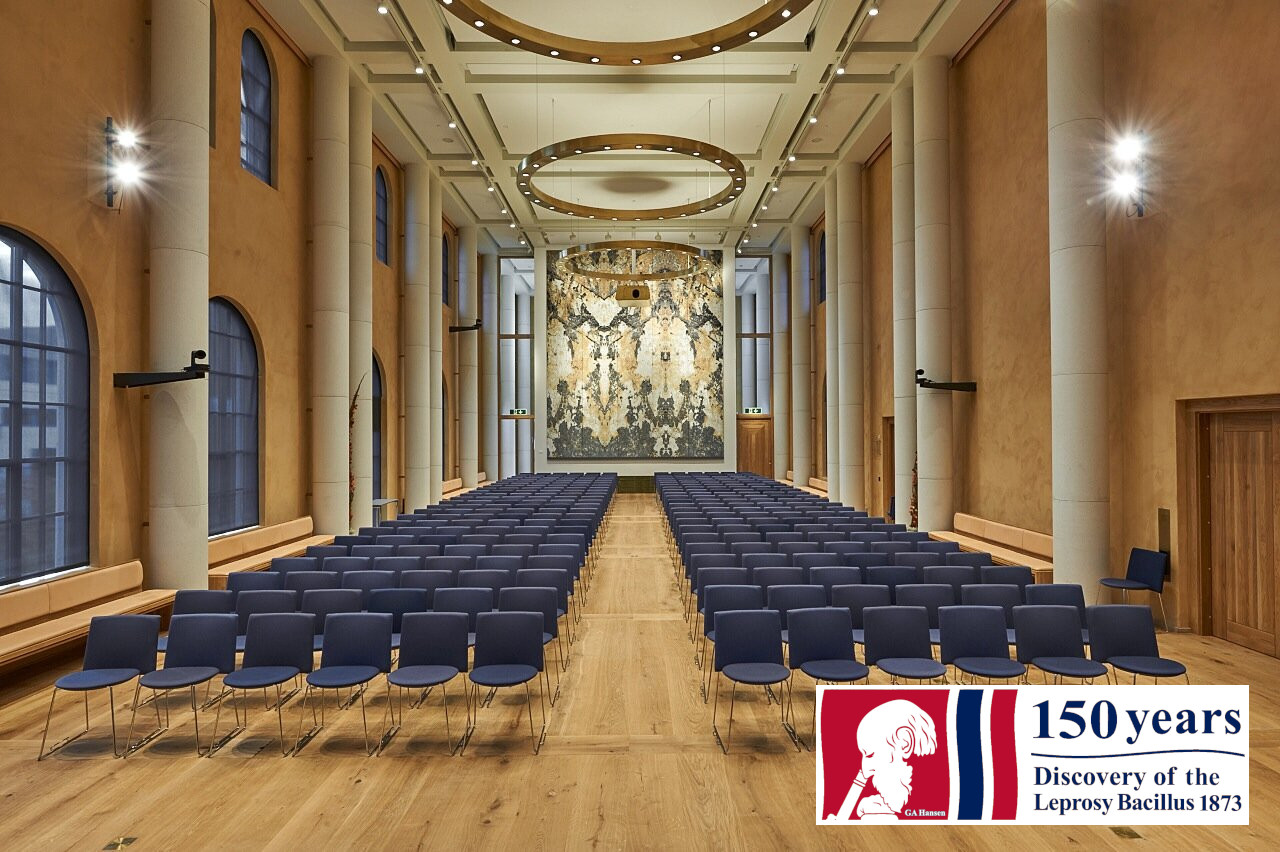 The University Aula in Bergen
The University Aula in Bergen
February 28, 1873, was a watershed moment in the history of leprosy and global health –
it was the day Gerhard Henrik Armauer Hansen (1841–1912) first observed the
leprosy bacillus, M. leprae. 150 years later, leprosy is still not
eradicated. Tuesday February 28, 2023, the University of Bergen hosted a
commemoration in the University Aula. A recording is now available.
Armauer Hansen’s discovery was the first time a pathogen was identified as the cause of a chronic disease, and one of the opening acts of the bacteriological revolution in medicine. The discovery disenchanted superstitions by giving the feared disease a rational explanation, and it had enormous consequences for preventive medicine and health legislation in Norway and globally. Eventually, the discovery paved the way for effective treatment. In many countries, leprosy has been renamed “Hansen’s disease”.
The University of Bergen was asked by the Norwegian government to host the official anniversary event. This took place in the University Aula on February 28th, a 90-minute program, which included speeches, greetings, music, and placing a wreath on Hansen’s bust and grave, followed by lunch. Click here to watch a recording of the event.
In Norway, leprosy is history. This is not the case for the approx. 150.000 persons diagnosed every year worldwide. The anniversary will critically assess past achievements, take stock of the situation today, and address the future steps needed to rid the world of this ancient, misunderstood, and treatable disease.
For those not able to travel to Bergen, the University of Bergen and Sasakawa Health Foundation also co-hosted an international webcast. Click here to read more about the webcast.